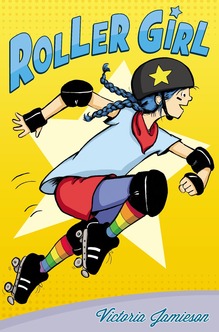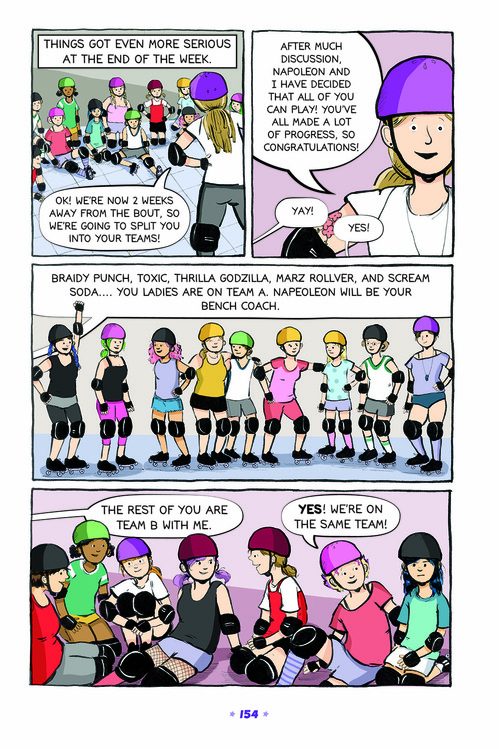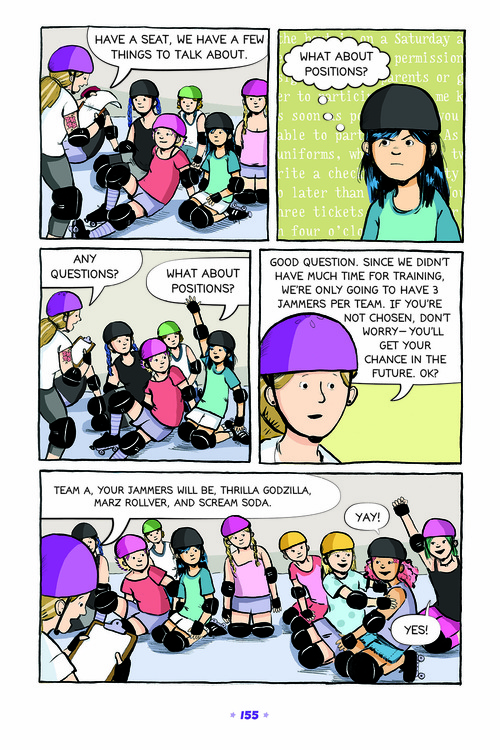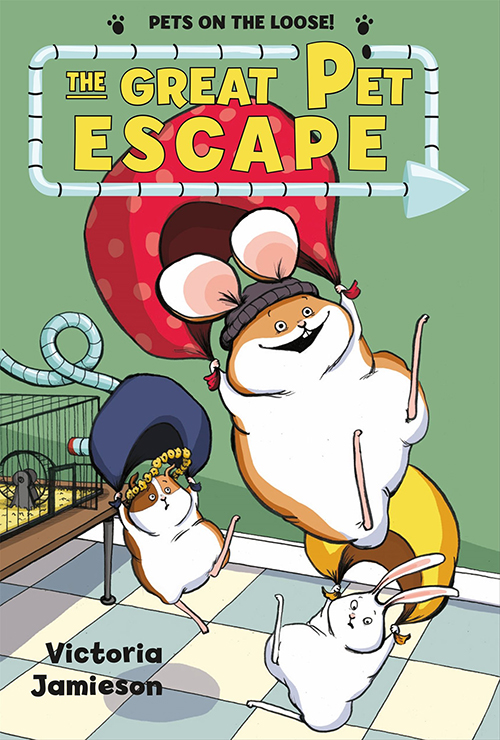Roller Girl Celebrates “Strong, Badass Women” and Tween Self-Discovery
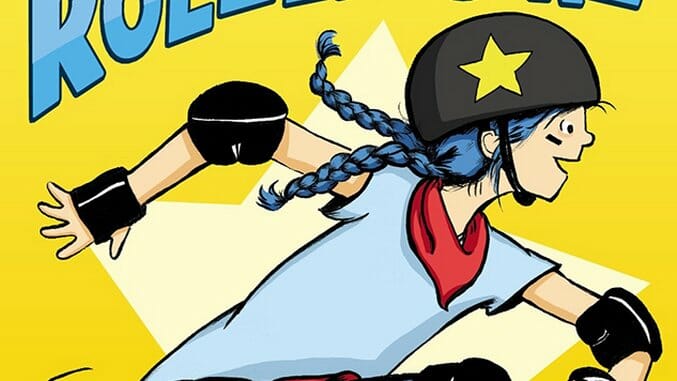
The tween years historically mark a period when the complacency of childhood collides with the exploration of adolescence, a vortex of hormones and emotions wreaking havoc on surrounding friends and family. Picture book author and new cartoonist Victoria Jamieson mirrors that metamorphosis through the rough-and-tumble world of junior roller derby in Roller Girl, a touching, joyous journey of bruised knees and self-discovery. The graphic novel follows every-kid Astrid as she falls in fevered love with roller derby and simultaneously falls out of friendship with her former BFF, Nicole. The cult sport empowers Astrid with a cathartic new framework to express herself (blue-thunder hair all the way) and realize her newfound potential.
Though Roller Girl is a work of fiction, it pulls directly from Jamieson’s own love affair with the sport. A year before moving to Portland in 2009, the cartoonist succumbed to the attitude and athleticism of roller derby through Shauna Cross’ novel Derby Girl and a Gotham Girls game in New York City. Shortly after, Jamieson transformed into Winnie the Pow and stormed Portland’s Oaks Amusement Park with The Rose City Rollers—the same team featured in the book. Jamieson soon took up coaching tween kids, and those experiences of young girls learning failure and flight for the first time give Roller Girl its stunning emotional realism.
Roller Girl fits nicely in an expanding library of comic masterpieces for the growing audience of teenage girls, filled with the work of bildungsroman pioneers like Raina Telgemeier (Smile), Vera Brosgol (Anya’s Ghost) and Noelle Stevenson (Nimona). The Association for Library Service to Children agreed, naming it a 2016 Newbery Honor Book. This marks the second instance when a graphic novel has been awarded this distinction; El Deafo by CeCe Bell was the first to win the accolade last year.
Jamieson, whose follow-up graphic novel The Great Pet Escape releases this week, emailed with us to discuss the eight-wheeled chaos of contact sports and adolescence.
![]()
Paste: You discovered roller derby in 2008, moved to Portland the next year and assumed the same role of Heidi Go Seek in Roller Girl, coaching tweens in the sport. Even the team in the book—The Rose City Rollers—is the real-life team you play in today. What experiences teaching and playing motivated you to write this graphic novel?
Victoria Jamieson: I wanted to write a graphic novel about roller derby because—simply put—I fell head-over-heels in love with roller derby. When you become passionately enthusiastic about something, you want to tell the world about it—or at least, I did. As I became more and more involved with derby, I saw more and more correlations between “real life” and my skating life. Friendships, disappointments, and successes felt very intense to me within derby, and it’s this intensity of feeling I tried to channel in Roller Girl.

Victoria Jamieson in Action with The Rose City Rollers
Paste: The book affirms roller derby as not only a sport, but a culture that allows girls to express themselves in ways that other sports might not: there’s no “warface” in ballet, let alone the leeway to color hair or pierce. Was the transformation we saw in Astrid on par with what you see as a teacher? What about roller derby supports this self-expression and attitude?
Jamieson: Well, I will say that ballerinas are also pretty badass. My best friends growing up were dancers, and I saw their taped-up feet and bloody toes. As a kid, however, ballet held no appeal whatsoever for me. I wasn’t a “girly” girl, and tutus and leotards just weren’t my thing, for whatever reason. I think roller derby offers an alternative space for girls to be athletic.
Part of my league’s, and many other leagues’, mission statement is to empower women and girls as they play this sport. Inclusion is a cornerstone of roller derby—inclusion of the LGBTQ community, inclusion of women from different backgrounds, and inclusion of women of all body shapes. Because diversity is welcomed and celebrated, I think skaters feel supported in expressing themselves.
Paste: Roller Girl has already motivated a few young girls to experiment with their hair color. Have you heard back from any parents less thrilled with Roller Girl-inspired follicle experimentation?
Jamieson: Actually, no! The parents who write to me are usually tickled at their kid’s newfound fascination with roller derby—boys and girls. I hear from parents who have taken their families to their first bouts in their communities, and from parents whose kids have joined their local junior league because of my book. It’s thrilling and humbling at the same time.
